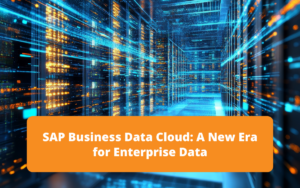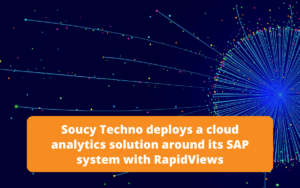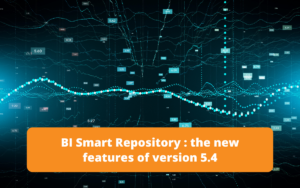SAP S/4HANA
In 2015, the German software company SAP released the latest version of its ERP software: SAP S/4HANA. This version is the successor to the SAP ECC 6 (ERP Central Component) version.
What is an ERP?
An ERP (Enterprise Resource Planning) is an Integrated Management Software Package (IMP) that covers all the functionalities of a company’s Information System (IS). All functions such as purchasing, sales, supply chain management, accounting, etc. are managed by the ERP system and interact with each other, which is why this software is called an “integrated” solution.
SAP S/4HANA is the ultimate connected ERP.
This version represents the biggest evolution of SAP in the ERP range since the release of SAP R/3 in 1992. SAP S/4HANA is based on state-of-the-art technologies such as in-memory databases and columnar storage, which allow for more efficient use of data in a big data and real-time manner.
SAP S/4HANA does not only offer drastically improved performance with its new database. The ERP also offers a completely new user experience with SAP Fiori. The SAP GUI has long been subject to criticism because of its interface. In comparison, SAP Fiori is a completely redesigned web interface that allows for a much more intuitive, ergonomic experience and is closer to today’s GUI standards.
The new features
The HANA « In-memory » database
One of the radically different features of SAP S/4HANA compared to SAP ECC is its DBMS (database management system). Whereas the database of the previous ERP versions was managed by third-party DBMSs (Oracle in 70% of cases), SAP wanted to develop its own database for S/4HANA: SAP HANA.
The special feature of the HANA database is that it operates in memory. This technology allows real-time access to data at an unrivalled speed.
The performance of the database is also due to the new storage mode: columnar storage
SAP HANA (acronym for High performance ANalytic Applicance) is an Appliance, a combination of hardware and software, optimised to take advantage of the latest technology in multi-core processors and RAM memory, all in a non-relational compressed data format.
This makes it possible to manage and analyse data of various types on a very large scale and in real time. SAP HANA was developed around in-memory and columnar storage technologies.
The term “in-memory” refers to the principle that data is no longer stored on disk but in RAM. This technology allows for much higher read and write speeds than with conventional database systems.
The objective of this technology is to bring the input/output as close as possible to the processor by limiting disk accesses to reduce calculation times.
Please note that SAP HANA is only compatible with the “SUSE enterprise” and “Red Hat enterprise” versions of Linux. In addition, the hardware must be certified by SAP, a list of supported configurations is available at this address : https://www.sap.com/dmc/exp/2014-09-02-hana-hardware/enEN
Subscribe to the Rapid Views Newsletter !
Stay up to date with our latest blog posts, upcoming webinars and news!
Software optimisation
Another specificity is that the development of applications based on HANA tends to move the calculations as much as possible to the database level and no longer to the application layer.
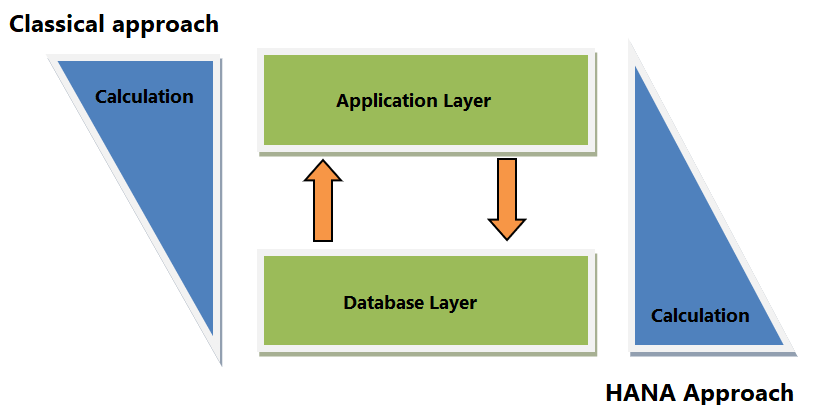
Thanks to this “code to data” principle, it is possible to take full advantage of the performance provided by this new database system and thus offer high-performance applications.
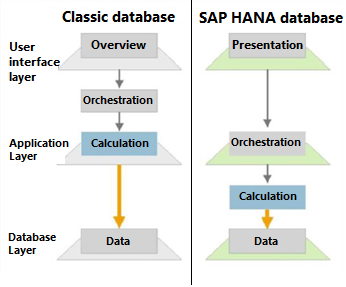
SAP HANA has different engines for processing the calculations and executing the programming code. This allows the application layer to focus on orchestrating and triggering the processing, rather than on the calculations. Complex logic can therefore be processed in a very short time.
The two main concepts related to software optimisation can be summarised as follows :
- Bring the logic to where the data is (database layer, not application layer)
- Calculate first and move only the results
La version Cloud de SAP S/4HANA
In 2016, SAP is offering an alternative to the On-premise solution of its ERP with the release of SAP S/4HANA Cloud, the ERP in SaaS mode.
This solution allows you to take full advantage of the performance of the “In-memory” HANA database from the Cloud. Transaction execution is fast and data access is in real time.
The integration of SAP S/4HANA can therefore be carried out in 3 different ways. It is possible to opt for :
- The on-premise version : SAP S/4HANA On Premise
- Compulsory licence
- Customer’s own datacenter, Virtual Private Cloud (VPC) or public IaaS
- The cloud version : SAP S/4HANA Cloud
- Operates in SaaS mode (software as a service)
- Datacenter on SAP’s private platform, the SAP HANA Enterprise Cloud (HEC), or on the public cloud of IaaS providers such as Microsoft Azure, AWS, or Google Cloud
- The hybrid version : SAP S/4HANA Private Cloud
- Combination of on-premise and cloud solution (HEC)
Fiori
SAP Fiori Launchpad is the latest generation web application interface for SAP’s ERP. Instead of logging into the SAP GUI, users can now access SAP transactions from their tablets or smartphones with the Fiori portal (SAPUI5 technology).
The advantages of Fiori are not limited to its web accessibility. Indeed, the interface has been completely redesigned. The SAP GUI and SAP Fiori interfaces no longer have anything in common in terms of ergonomics. The Fiori interface is much more intuitive and functional than the SAP GUI interface.
The interface offers users a business-oriented view via tiles and a portal.
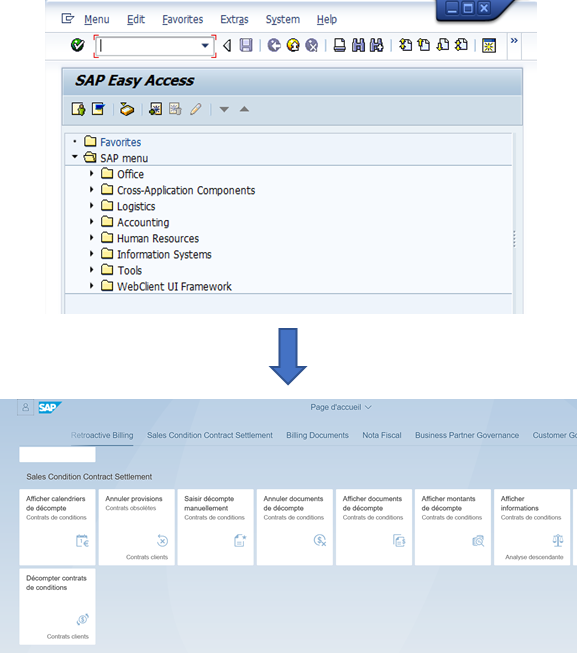
With Fiori, users have access to a multitude of applications. In addition to the transactional functionality of the ERP, SAP S/4HANA Embedded Analytics is available for operational reporting needs.
The suite of “Analytics” applications provides numerous pre-designed reports and Performance Indicators (KPI) by functional area (sales, purchasing, accounting, etc.), all in real time.
It is of course possible to create your own KPIs, analysis and reports using the dedicated Fiori tiles, or by developing your own SAP ABAP Core Data Services (CDS) on the HANA Studio, which form the virtual data models (VDMs) at the base of the solution.
RapidViews can also be deployed on the S/4 HANA ERP to provide users with pre-configured CDS Views in the form of virtual datamarts and semantic layers covering business intelligence reporting needs.
Release
Both versions of SAP S/4HANA (“On-premise” and Cloud) are subject to regular release upgrades. The upgrades contain new business features and bug fixes for earlier versions.
As SAP prefers the Cloud version, new versions are available more quickly, with a new version available to customers every quarter.
The On-premise solution offers a new version, on average, once a year.
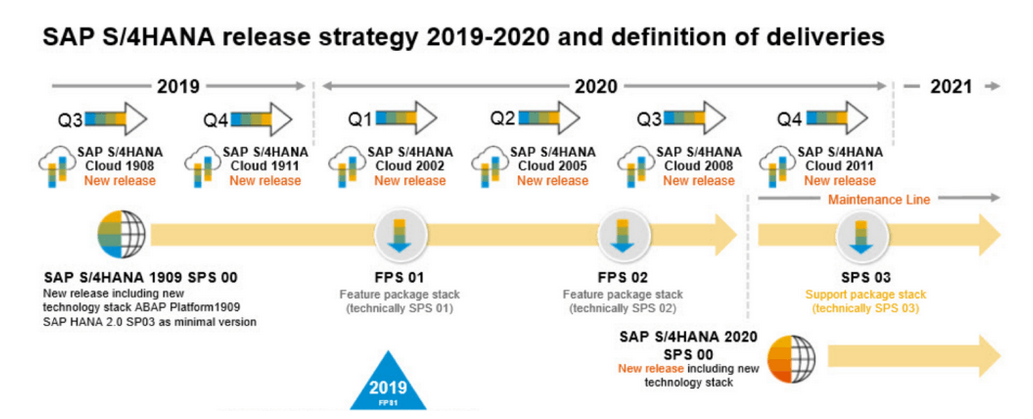
Expert’s conclusion
The developments in SAP S/4HANA are considerable. The technologies used in the new HANA database provide unparalleled levels of performance.
The new FIORI web interface allows SAP to rejuvenate the ERP user interface, and to match the current standards of presentation and navigation.
This version allows to take full advantage of the Cloud and the Internet of Things (IoT). SAP S/4HANA is considered a mature solution since 2018.
Thanks to HANA, operational and decision-making reporting can be carried out directly on the production ERP with real-time data, via Embedded Analytics, RapidViews, etc.
Beware, the migration from SAP ECC to SAP S/4HANA can be complex and costly. Fortunately, SAP offers the possibility to continue to use the functionalities of the previous ERP version after the migration (compatibility tables, …)
SAP has announced that it will continue to support SAP ECC until 2027, so customers should plan their migration roadmap in the coming years.
